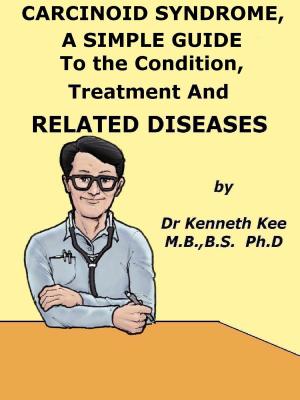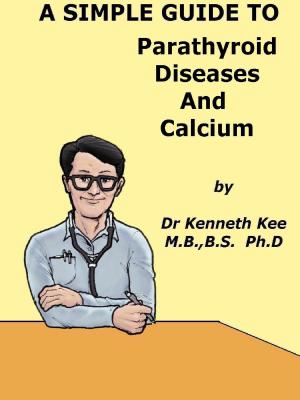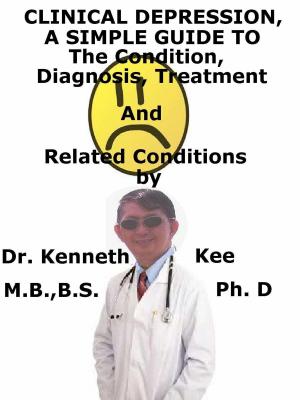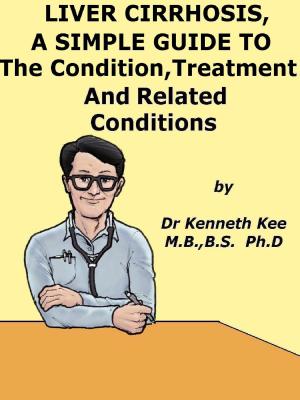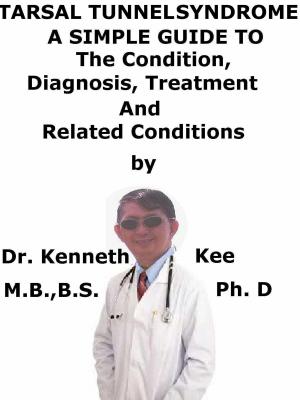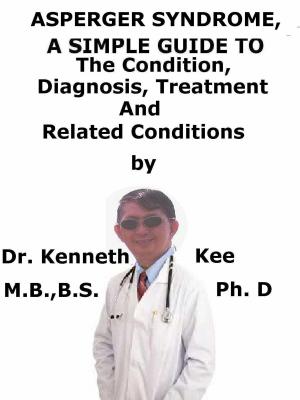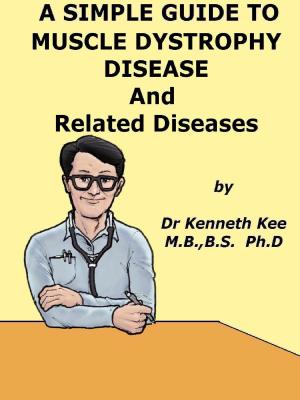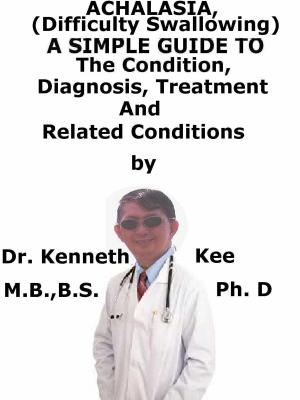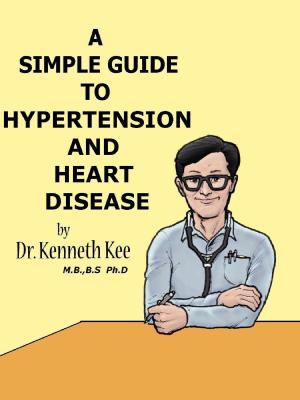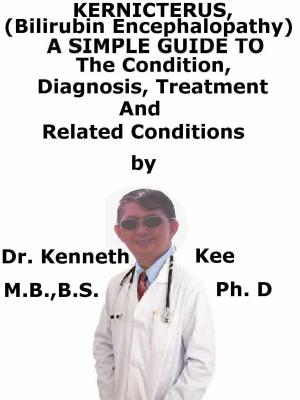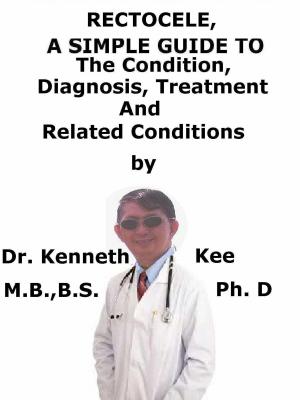Priapism (Painful Erection), A Simple Guide To The Condition, Treatment And Related Conditions
Nonfiction, Health & Well Being, Medical, Specialties, Urology, Health, Men&| Author: | Kenneth Kee | ISBN: | 9781370780150 |
| Publisher: | Kenneth Kee | Publication: | January 24, 2017 |
| Imprint: | Smashwords Edition | Language: | English |
| Author: | Kenneth Kee |
| ISBN: | 9781370780150 |
| Publisher: | Kenneth Kee |
| Publication: | January 24, 2017 |
| Imprint: | Smashwords Edition |
| Language: | English |
Priapism is a prolonged erection of the penis which is usually painful and lasts more than 4 hours.
It is not necessarily related with sexual desire or excitement and does not subside after ejaculation
Priapism may occur by itself or caused by medical treatment (iatrogenic) and can occur in all age groups including newborns.
It usually affects men between the ages of 5 to 10 years and 20 to 50 years.
There are two types of priapism:
1. The low flow priapism is the result of blood being stuck in the erection chambers.
Low flow priapism usually occurs without a known cause in men who are otherwise healthy but also affects men with sickle cell disease, leukemia (cancer of the blood) or malaria.
2. High-flow priapism is less common than low-flow and usually not painful.
It occurs from a ruptured artery from an injury to the penis or the perineum (area between the scrotum and anus) which prevents blood in the penis from circulating normally.
Medically the condition is associated with high blood flow when there is little risk of tissue damage or low blood flow when the risk of damage is higher.
Some 35 per cent of cases are idiopathic (unknown cause) and 21 per cent are associated with drug therapy or alcohol abuse.
Injury accounts for 21 per cent and blood disorders 8 per cent.
A painful erection that lasts for longer than four hours requires treatment in hospital.
Many cases resolve spontaneously after repeated ejaculation, physical activity or a brisk walk.
Oral terbutaline (e.g. Bricanyl) or salbutamol (e.g. Ventolin) may help if given early.
Blood (50ml) can be removed by a doctor inserting a large bore (19G+) needle into the penis often in conjunction with heparin and saline to reduce clotting.
In resistant cases, a reversing agent, metaraminol (1 per cent solution), may be injected into the penis.
Rarely surgery is required to avoid permanent damage to the muscle of the penis.
Surgery may be suggested if the condition does not respond to aspiration or injections.
There are several operation procedures available depending on the type of priapism you have.
If you have low flow priapism, shunt surgery may be recommended.
A small device called a shunt is implanted into the penis to re-route the blood supply out of the penis.
TABLE OF CONTENT
Introduction
Chapter 1 Priapism
Chapter 2 More about Priapism
Chapter 3 Treatment of Priapism
Chapter 4 Erectile Dysfunction
Chapter 5 Sex and Priapism
Chapter 6 Sickle Cell Anemia
Chapter 7 Types of Penises
Epilogue
Priapism is a persistent erection which causes the penis pain.
It is not related to sexual desire or sexual excitement
Priapism may be spontaneous or caused by medical treatment
Any penis erection over 4 hours will require immediate management
Causes for ischemic priapism are sickle cell anemia and blood conditions
Patients with ischemic priapism typically have pain and rigid erections
Non-ischemic priapism is often due to the rupture of artery in the penis from injury
Other causes are perineum surgery and illegal drug therapy
Full blood count and hemoglobin analysis will exclude sickle cell anemia
In high flow priapism ultrasonography can help identify and locate fistulas
Aspiration of old blood from the pooled blood in the penis is a simple intervention
Intracavernous injection of alpha agonists will help in the arterial constriction
-An original poem by Kenneth Kee
Priapism is a prolonged erection of the penis which is usually painful and lasts more than 4 hours.
It is not necessarily related with sexual desire or excitement and does not subside after ejaculation
Priapism may occur by itself or caused by medical treatment (iatrogenic) and can occur in all age groups including newborns.
It usually affects men between the ages of 5 to 10 years and 20 to 50 years.
There are two types of priapism:
1. The low flow priapism is the result of blood being stuck in the erection chambers.
Low flow priapism usually occurs without a known cause in men who are otherwise healthy but also affects men with sickle cell disease, leukemia (cancer of the blood) or malaria.
2. High-flow priapism is less common than low-flow and usually not painful.
It occurs from a ruptured artery from an injury to the penis or the perineum (area between the scrotum and anus) which prevents blood in the penis from circulating normally.
Medically the condition is associated with high blood flow when there is little risk of tissue damage or low blood flow when the risk of damage is higher.
Some 35 per cent of cases are idiopathic (unknown cause) and 21 per cent are associated with drug therapy or alcohol abuse.
Injury accounts for 21 per cent and blood disorders 8 per cent.
A painful erection that lasts for longer than four hours requires treatment in hospital.
Many cases resolve spontaneously after repeated ejaculation, physical activity or a brisk walk.
Oral terbutaline (e.g. Bricanyl) or salbutamol (e.g. Ventolin) may help if given early.
Blood (50ml) can be removed by a doctor inserting a large bore (19G+) needle into the penis often in conjunction with heparin and saline to reduce clotting.
In resistant cases, a reversing agent, metaraminol (1 per cent solution), may be injected into the penis.
Rarely surgery is required to avoid permanent damage to the muscle of the penis.
Surgery may be suggested if the condition does not respond to aspiration or injections.
There are several operation procedures available depending on the type of priapism you have.
If you have low flow priapism, shunt surgery may be recommended.
A small device called a shunt is implanted into the penis to re-route the blood supply out of the penis.
TABLE OF CONTENT
Introduction
Chapter 1 Priapism
Chapter 2 More about Priapism
Chapter 3 Treatment of Priapism
Chapter 4 Erectile Dysfunction
Chapter 5 Sex and Priapism
Chapter 6 Sickle Cell Anemia
Chapter 7 Types of Penises
Epilogue
Priapism is a persistent erection which causes the penis pain.
It is not related to sexual desire or sexual excitement
Priapism may be spontaneous or caused by medical treatment
Any penis erection over 4 hours will require immediate management
Causes for ischemic priapism are sickle cell anemia and blood conditions
Patients with ischemic priapism typically have pain and rigid erections
Non-ischemic priapism is often due to the rupture of artery in the penis from injury
Other causes are perineum surgery and illegal drug therapy
Full blood count and hemoglobin analysis will exclude sickle cell anemia
In high flow priapism ultrasonography can help identify and locate fistulas
Aspiration of old blood from the pooled blood in the penis is a simple intervention
Intracavernous injection of alpha agonists will help in the arterial constriction
-An original poem by Kenneth Kee


